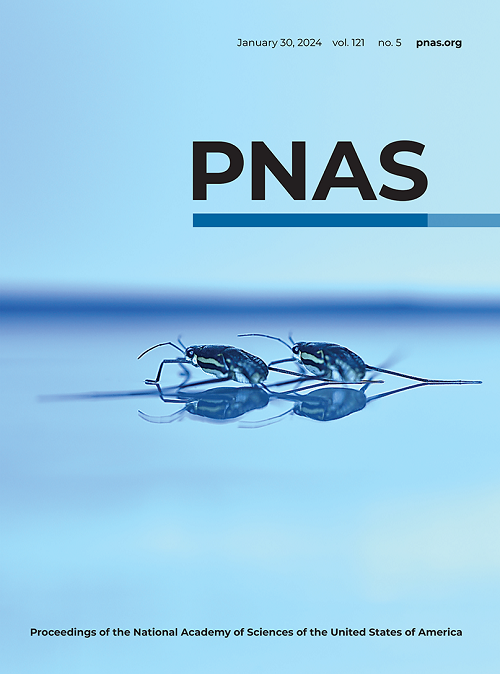Hydrogen cyanide and hydrocarbons mix on Titan.
IF 9.4
1区 综合性期刊
Q1 MULTIDISCIPLINARY SCIENCES
Proceedings of the National Academy of Sciences of the United States of America
Pub Date : 2025-07-23
DOI:10.1073/pnas.2507522122
引用次数: 0
Abstract
This work reveals a striking exception to the well-established rule in chemistry that polar and nonpolar compounds do not spontaneously mix: insertion of methane, ethane, and other small hydrocarbons into the crystal lattice of hydrogen cyanide (HCN), a highly polar molecule. By mixing these components at cryogenic temperatures, we can observe distinct shifts in vibrational modes using Raman spectroscopy. Our computational predictions confirm that cocrystal structures of HCN and ethane, which match our experimental vibrational shifts closely, are thermodynamically and kinetically stable. Given that methane, ethane, and HCN are major components of the atmosphere and surface of Saturn's moon Titan-where they play key roles in shaping chemistry, weather, and landscape-our findings may prove instrumental for explaining Titan's chemical and geological evolution.土卫六上氰化氢和碳氢化合物混合在一起。
这项工作揭示了极性和非极性化合物不能自发混合这一公认的化学规律的一个惊人的例外:甲烷、乙烷和其他小碳氢化合物插入到氰化氢(HCN)的晶格中,这是一种高极性分子。通过在低温下混合这些成分,我们可以使用拉曼光谱观察到振动模式的明显变化。我们的计算预测证实,HCN和乙烷的共晶结构与我们的实验振动位移密切匹配,是热力学和动力学稳定的。考虑到甲烷、乙烷和HCN是土星卫星泰坦的大气和表面的主要成分,它们在形成化学、天气和景观方面起着关键作用,我们的发现可能有助于解释泰坦的化学和地质演化。
本文章由计算机程序翻译,如有差异,请以英文原文为准。
求助全文
约1分钟内获得全文
求助全文
来源期刊
CiteScore
19.00
自引率
0.90%
发文量
3575
审稿时长
2.5 months
期刊介绍:
The Proceedings of the National Academy of Sciences (PNAS), a peer-reviewed journal of the National Academy of Sciences (NAS), serves as an authoritative source for high-impact, original research across the biological, physical, and social sciences. With a global scope, the journal welcomes submissions from researchers worldwide, making it an inclusive platform for advancing scientific knowledge.

 求助内容:
求助内容: 应助结果提醒方式:
应助结果提醒方式:


